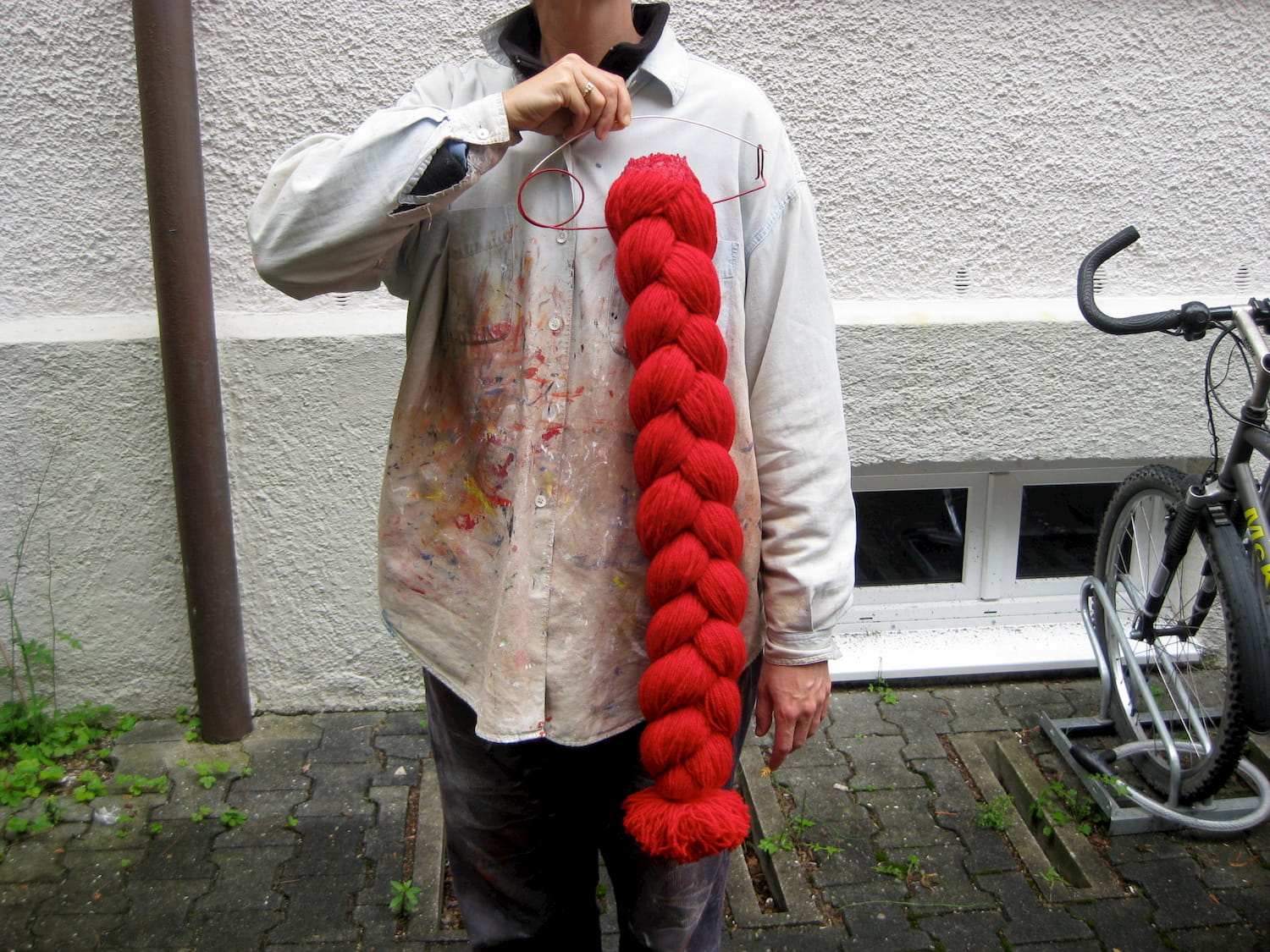
Culture Quiz: Design Hub Gallery
RMIT’s Design Hub Gallery asks questions about the role of design in the world today.
Through exhibitions, conversations, performances and publications, the Gallery explores the process of design – making space to imagine, test and risk new ideas together.
Come back next week to test your knowledge of the student-directed First Site Gallery.
Quiz
1. How many circular glass panels cover the Design Hub building?
a) 13,000
b) 15,000
c) 17,000
d) 19,000

c) 17,000. The iconic building is a Greenstar Certified Project and has won several awards for its architecture. It houses RMIT’s Design Hub Gallery, the Design Archives and the School of Architecture and Urban Design. You can watch a time-lapse of Design Hub’s construction here.
2. In the courtyard of RMIT Design Hub sits a landform installation made from 434 unique timber battens. Who designed this installation?
Mark Jacques designed this functional piece as an alternative to the concrete bollard barriers that are prevalent throughout Melbourne’s CBD. Jacques, who is the director of landscape architecture and urban design practice Openwork, said “we are sceptical of the message that bollards transmit about permission in public space, and we proposed a land-form instead of a bollard that invites the body”. Read about it here.
3. RMIT Design Hub Gallery recently helped curate Spaced Apart, an online design, art, photography, architecture and sound symposium. Which of the following live talks were curated by Design Hub Gallery?
a) Tin&Ed
b) Brook Andrew
c) Yuri Suzuki
a) Tin&Ed. RMIT Design Hub Gallery curated Tin&Ed’s discussion, as well as talks with jeweller Roseanne Bartley and collaborative group Open Spatial Workshop. Tin&Ed are known for their large-scale immersive installations that merge art and science. Spaced Apart featured a broad range of presenters from a variety of disciplines. You can watch the talks and read more about the project here.
4. In 2018, Design Hub Gallery and Liquid Architecture collaborated to create a program of talks, workshops and performances. What was the title of this project?
,%20courtesy%20of%20Keelan%20O_Hehir.jpg)
Why Listen to Plants? explored plants as sites of collective organisation, and their collaborators microbes, fungi and bees as social protagonists through a series of multidisciplinary events. You can read more about the exhibition here.
5. Earlier in 2018 Design Hub Gallery held the exhibition WORKAROUND – Women Design Action. How was the physical space of Design Hub Gallery transformed to make this project possible?
The Gallery became a live broadcast/television studio that streamed a series of event-based ‘episodes’ online. WORKAROUND engaged with a movement of women dedicated to advocacy and activism within the field of architecture. Driven by increasing urgencies of environmental, social and professional challenges, the exhibiting design practitioners presented unique ways of working around existing systems and structures. You can watch short recap videos of each episode here.
6. Super Tight was a 2019 exhibition held at Design Hub Gallery that explored the culture and creative potential of spatial tightness emerging in Asian cities. What was the name of the custom-built bar that housed a series of discussions on small spaces?

The Tight Bar held free talks every Wednesday during the exhibition from a variety of design industry professionals. Super Tight was an immersive exhibition that explored the tightness that comes from urban density, specifically looking at the tightness that has emerged in Asian megacities, and the role designers have played in its emergence. Super Tight questioned social attitudes to this tightness in Australia and beyond. Read more here.
7. What was the title of the book that accompanied Lisa Walker’s exhibition She wants to go to her bedroom but she can’t be bothered, on display at the Gallery in early 2019?

An unreliable guidebook to jewellery by Lisa Walker edited by Design Hub Gallery’s Kate Rhodes and Nella Themelios. The book, designed by Ziga Testen and Kim Mumm Hansen, delves into Lisa Walker’s jewellery practice, and went on to receive the award for Best Designed Independent Book at the Australian Book Design Awards. You can read more about the exhibition here, and preview the publication here.
8. Held at Design Hub Gallery earlier this year, Metahaven: Field Report featured the work of multidisciplinary Amsterdam-based design studio Metahaven. What is the name of the major film and sound installation that screened in the exhibition?
Eurasia (Questions on Happiness) is a cinematic assemblage of landscapes of the south-eastern Urals and Macedonia built around a narrative of political fragmentation in Europe. Presented in collaboration with Melbourne Art Book Fair and the NGV, Metahaven: Field Report reflected upon today’s condition of information overload, and the role people play within this new digital world. The exhibition presented a film, sound installation and new tapestry works that centre around the reality of digital media as a tool for propaganda. Read more here.
- PEG
Acknowledgement of Country
RMIT University acknowledges the people of the Woi wurrung and Boon wurrung language groups of the eastern Kulin Nation on whose unceded lands we conduct the business of the University. RMIT University respectfully acknowledges their Ancestors and Elders, past and present. RMIT also acknowledges the Traditional Custodians and their Ancestors of the lands and waters across Australia where we conduct our business - Artwork 'Sentient' by Hollie Johnson, Gunaikurnai and Monero Ngarigo.